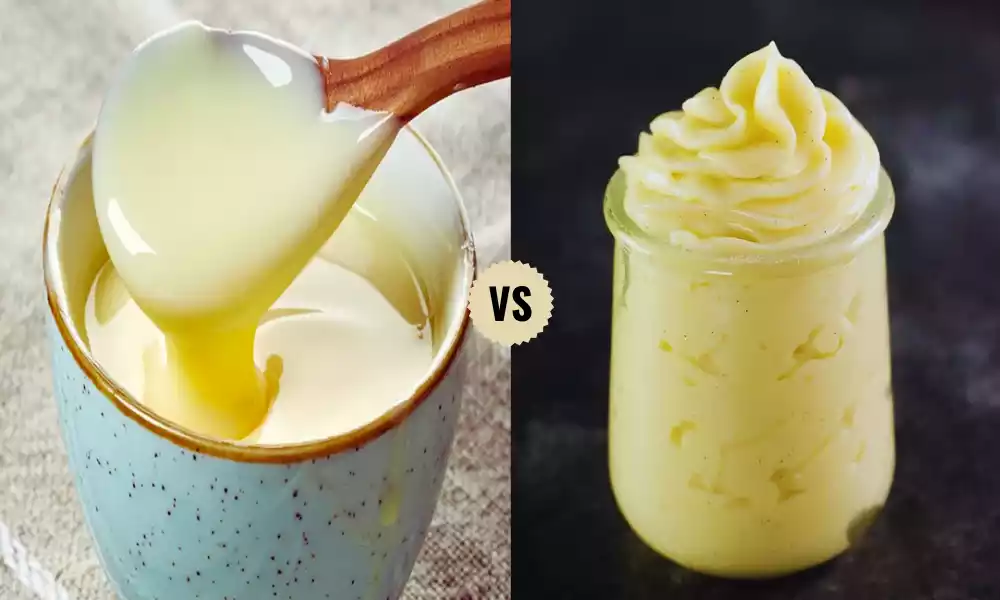Creme Anglaise and Creme Patissiere are two exquisite elements in the world of pastry and dessert-making. Hailing from the heart of French culinary tradition, these creamy delights play distinct yet equally important roles in crafting heavenly sweets. Creme Anglaise, often called English Custard, enchants with its silky texture, perfect for drizzling over desserts. On the other hand, Creme Patissiere, known as pastry cream, offers a sumptuous, thick custard ideal for filling pastries and tarts.
What is Creme Anglaise?
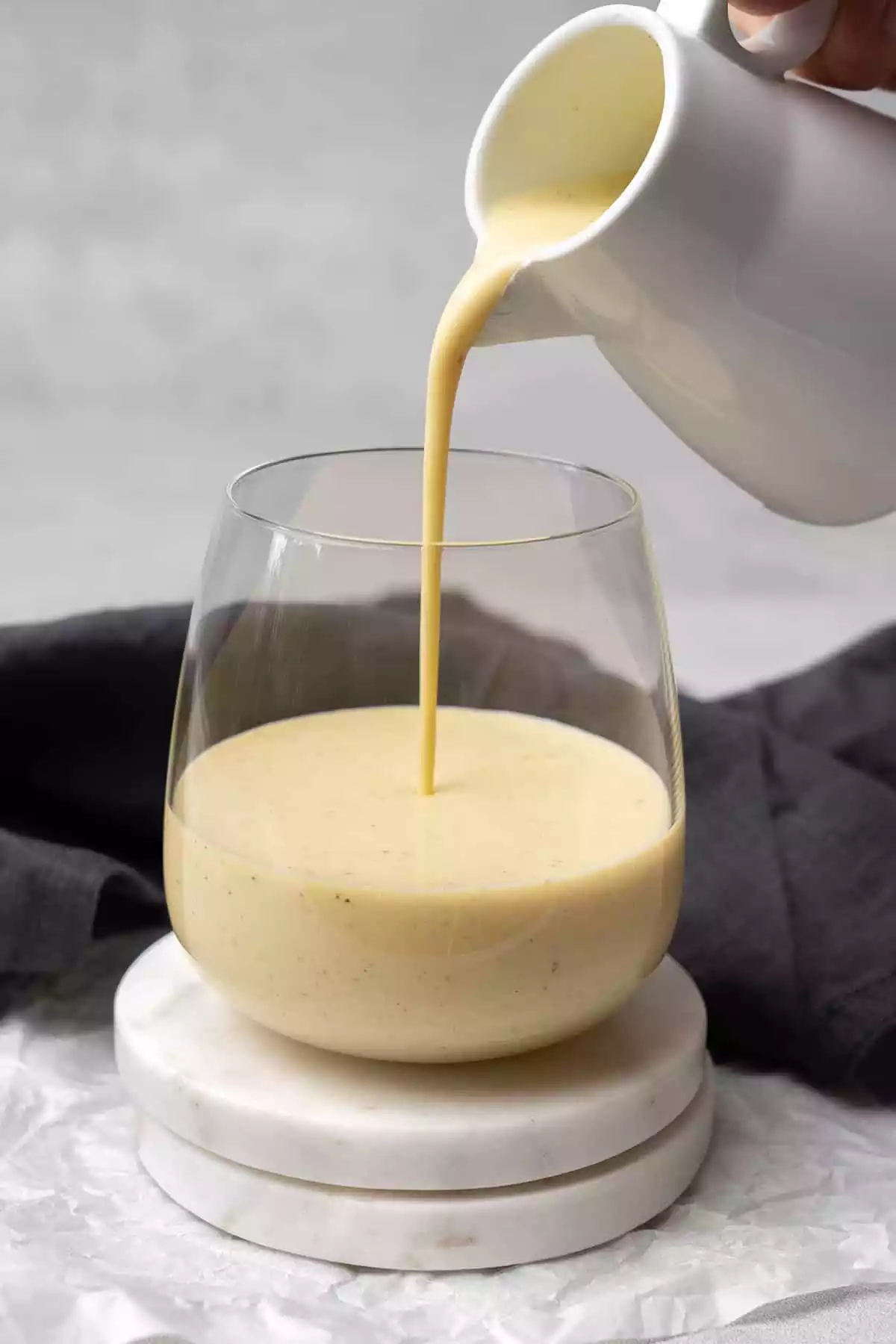
Creme Anglaise, which translates to “English cream” in French, is a classic and versatile custard sauce that has graced the tables of gourmet enthusiasts and dessert lovers for generations. Its creation involves a simple yet precise blend of egg yolks, sugar, and hot milk, which is gently whisked together until it achieves a velvety, smooth consistency. The mixture is then gently heated over low heat, all while being attentively stirred to prevent any curdling or lump formation.
What makes Creme Anglaise truly exquisite is its delicate sweetness and rich, creamy texture. The addition of vanilla extract or a vanilla bean infuses it with a subtle, fragrant aroma that elevates its overall appeal. This luscious sauce can be served warm or cold, making it incredibly versatile in the culinary world.
Creme Anglaise’s primary role is as a delectable accompaniment to various desserts. It is often lavishly poured over warm cakes, tarts, or fresh fruits, adding a layer of indulgence to these treats. This sauce also plays a vital role in the creation of classic French desserts like soufflés and crème brûlée. Its ability to harmonize with a wide range of flavors and textures makes it a prized asset in the repertoire of pastry chefs and home bakers alike.
Creme Anglaise is the epitome of creamy elegance, enhancing the flavors and presentation of a wide array of desserts with its silky, sweet, and aromatic allure.
Ingredients and Preparation of Creme Anglaise
Creating the lusciously smooth and creamy Creme Anglaise requires precision and attention to detail. Here’s a breakdown of the ingredients and the step-by-step preparation process:
Ingredients:
- Egg Yolks: You’ll need a few egg yolks (usually around 4-6) depending on the quantity you want to make. Egg yolks add richness and soft texture to custard.
- Granulated Sugar: Sugar adds sweetness to the custard. The amount of sugar can be adjusted according to your taste, but a typical ratio is about 1/4 to 1/2 cup of sugar per 1 cup of milk.
- Whole Milk: Whole milk is the base of the custard. Its fat content contributes to the creaminess of the sauce. About 1 to 2 cups of milk are generally used.
- Vanilla Extract or Vanilla Bean: To infuse the custard with a delightful vanilla flavor, you can use either pure vanilla extract or a vanilla bean. If using a bean, you’ll need to split it open and scrape out the tiny seeds inside.
Preparation:
- Separate the Egg Yolks: Start by separating the egg yolks from the egg whites. You’ll only need the yolks for Creme Anglaise. Mix the yolks thoroughly in a mixing bowl.
- Whisk with Sugar: Add the granulated sugar to the egg yolks. Use a whisk to beat them together until the mixture becomes pale and slightly thick. This step is known as “blanching.”
- Heat the Milk: In a saucepan, heat the whole milk over low to medium heat until it becomes warm but not boiling. You want it to be hot enough to temper the egg mixture but not so hot that it curdles the eggs.
- Temper the Eggs: Slowly pour a small amount of the hot milk into the egg yolk and sugar mixture while whisking continuously. This gradually raises the temperature of the eggs without cooking them too quickly. Continue to add the hot milk slowly until the egg mixture is warm.
- Combine and Heat: Pour the mixture of milk and eggs back into the pan with any leftover hot milk. Place the saucepan over low heat and continue to cook, stirring constantly with a wooden spoon or a heat-resistant spatula. Be patient and maintain a low heat to prevent curdling. Custard thickens as it cooks.
- Check for Doneness: To test if the custard is ready, dip the back of your spoon into it. If the custard coats the spoon and you can draw a line through it with your finger, it’s done.
- Strain and Cool: Remove the saucepan from the heat and strain the custard through a fine-mesh sieve to remove any curdled bits or the vanilla bean (if used).
Once cooled, your homemade Creme Anglaise is ready to be drizzled over your favorite desserts or used as a base for various culinary creations. Its creamy, vanilla-infused goodness will undoubtedly elevate your dessert game.
Culinary Uses of Creme Anglaise
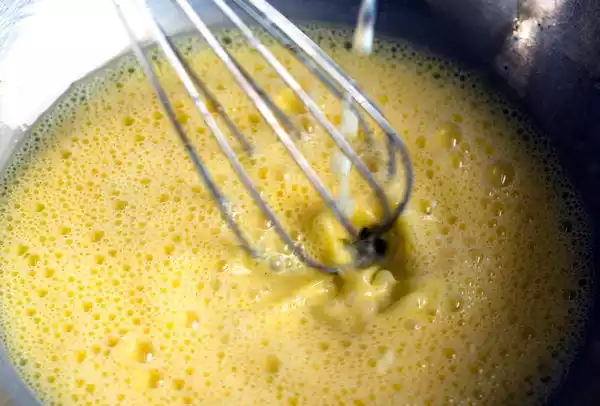
Creme Anglaise, the velvety custard sauce with its delicate sweetness and rich texture, is a versatile culinary delight that enhances various desserts and sweet creations. Here’s a glimpse of its delightful culinary uses:
- Dessert Drizzle: One of the primary uses of Creme Anglaise is as a drizzling sauce. It’s often poured over warm desserts like cakes, tarts, and puddings, adding a luxurious touch and a delightful contrast in temperature.
- The base for Desserts: Creme Anglaise serves as the base for creating classic French desserts such as crème brûlée, floating islands (îles flottantes), and custard-based soufflés. Its creamy consistency and sweet flavor provide a perfect canvas for these delicate creations.
- Ice Cream Topping: When cooled, Creme Anglaise transforms into an excellent topping for ice cream, turning a simple scoop into a gourmet treat.
- Berries and Fruit: Drizzle Creme Anglaise over fresh berries, sliced fruits, or fruit salad to elevate their flavors and create an elegant dessert or snack.
- Bread Pudding: Pour this custard sauce over bread pudding or bread and butter pudding, allowing it to soak into the bread for a sumptuous dessert experience.
- Trifles: Layer Creme Anglaise with cake or ladyfingers, fresh fruits, and whipped cream to create delightful trifle desserts.
- Dip for Pastries: Use it as a dipping sauce for pastries, such as beignets or churros, enhancing their sweetness and providing a creamy contrast.
- Coffee or Tea Add-In: Some enjoy a spoonful of Creme Anglaise in their coffee or tea as a rich and sweet addition.
- Parfaits: Incorporate it into dessert parfaits by layering it with crushed cookies or granola and fresh fruits or berries.
- Flavor Infusions: Experiment with flavor infusions like chocolate, espresso, or citrus zest to customize Creme Anglaise for specific desserts or creative variations.
- Cocktail Mixer: Creme Anglaise can be used as an ingredient in dessert-inspired cocktails and beverages, adding creaminess and sweetness to the mix.
- Plating Garnish: Decorate dessert plates with artistic drizzles or dots of Creme Anglaise to enhance the presentation of your sweet creations.
The versatility of Creme Anglaise, its smooth texture, and its delicate sweetness make it an indispensable component in the world of desserts. Whether used as a drizzle, a base, or a dipping sauce, Creme Anglaise elevates the flavors and presentation of a wide array of sweet treats, turning ordinary desserts into extraordinary culinary experiences.
What is Creme Patissiere?
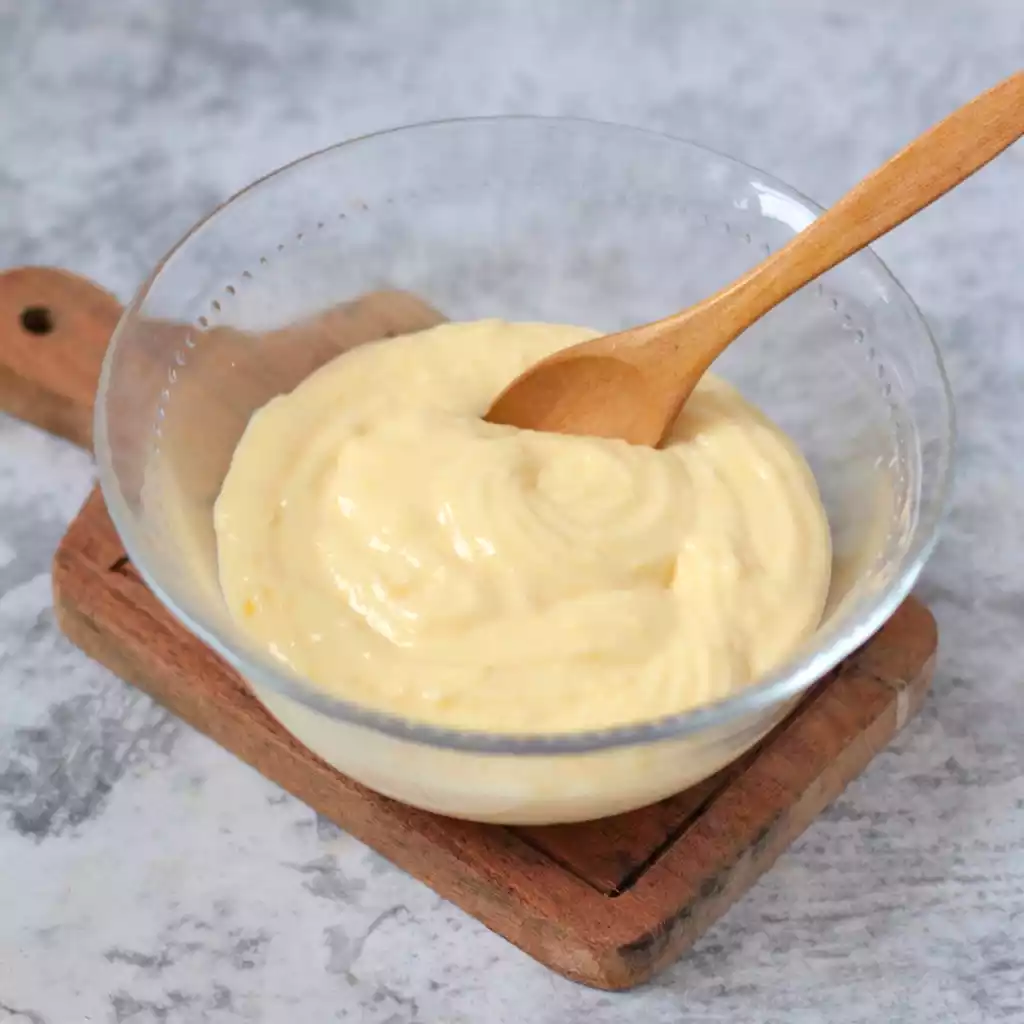
Creme Patissiere, known as pastry cream in English, is a luscious and creamy custard with its roots deeply embedded in the heart of French pastry artistry. This delightful concoction is created by expertly blending together a few key ingredients – milk, egg yolks, sugar, and cornstarch. The mixture is cooked to perfection over medium heat until it thickens into a luxurious custard. For an extra layer of flavor, a hint of vanilla is often added, infusing the custard with a delightful fragrance.
What sets Creme Patissiere apart is its sumptuous, thick texture, making it the perfect filling for a variety of pastries and desserts. The custard’s velvety consistency not only adds a rich and creamy dimension to the treats but also provides a stable structure, ensuring that filled pastries maintain their shape.
The applications of Creme Patissiere in the culinary world are vast and delightful. It is the essential filling for classics like éclairs and cream puffs, where its luxurious custard marries perfectly with the delicate pastry shells. Additionally, it takes center stage in various tarts, such as fruit tarts, where it complements the crispy crust with its creamy interior.
Creme Patissiere isn’t just a static filling; it can be adapted to suit various flavor profiles. Pastry chefs often infuse it with different extracts, such as almond or orange, or experiment with zest from citrus fruits to create exciting variations.
Creme Patissiere is the unsung hero behind many beloved pastries, contributing its decadent texture and rich flavor to elevate them from ordinary to extraordinary. Its versatility and capacity to transform simple pastries into culinary masterpieces make it a fundamental element in the world of dessert crafting.
Ingredients and Preparation of Creme Patissiere
Creating the sumptuous and creamy Creme Patissiere, also known as pastry cream, is a culinary skill that combines simple ingredients with meticulous technique. Here’s a step-by-step breakdown of the ingredients and the preparation process:
Ingredients:
- Whole Milk: Begin with approximately 2 cups of whole milk. The higher fat content of whole milk contributes to the creamy richness of the pastry cream.
- Egg Yolks: Reserve the yolks from 4 to 6 large eggs, depending on the quantity you desire. The egg yolks lend a luxurious texture and richness to the custard.
- Granulated Sugar: For sweetness, you’ll need about 1/2 to 3/4 cup of granulated sugar, depending on your taste preferences and the level of sweetness you desire.
- Cornstarch: Cornstarch serves as the thickening agent, typically requiring about 1/4 to 1/3 cup to achieve the desired consistency.
- Vanilla Extract or Vanilla Bean: For flavor, you can opt for pure vanilla extract or a vanilla bean. If using a vanilla bean, split it open and scrape out the tiny seeds.
Preparation:
- Whisk Egg Yolks and Sugar: In a mixing bowl, whisk together the reserved egg yolks and granulated sugar until the mixture becomes pale and slightly thick. This process is known as “blanching.”
- Incorporate Cornstarch: Gradually add the cornstarch to the egg yolk and sugar mixture, continuing to whisk until it is fully integrated. This cornstarch will act as the primary thickening agent for the custard.
- Heat the Milk: In a saucepan, gently warm approximately 2 cups of whole milk over low to medium heat. Ensure the milk is hot but not boiling; this prevents it from scorching or curdling the egg mixture.
- Temper the Eggs: Slowly pour a small amount of the hot milk into the egg yolk, sugar, and cornstarch mixture while continuously whisking. This gradual process raises the temperature of the eggs without cooking them too rapidly. Continue this step until the egg mixture is warm.
- Combine and Cook: Transfer the mixture of egg and milk back into your saucepan along with any additional hot milk that remains. Place the saucepan over low heat and cook the custard, stirring consistently with a wooden spoon or a heat-resistant spatula. Maintain a low heat to prevent curdling, allowing the custard to thicken gradually.
- Check for Consistency: To test the custard’s readiness, dip the back of a spoon into it. If the custard coats the spoon and you can draw a line through it with your finger, it has achieved the desired thickness.
- Strain and Cool: Remove the saucepan from the heat and strain the custard through a fine-mesh sieve to remove any lumps or, if used, the remnants of the vanilla bean. Let the Creme Patissiere cool to room temperature, during which it will continue to thicken.
Your homemade Creme Patissiere is ready to elevate your pastries, tarts, and desserts with its luxurious creaminess and delightful vanilla flavor.
Culinary Uses of Creme Patissiere
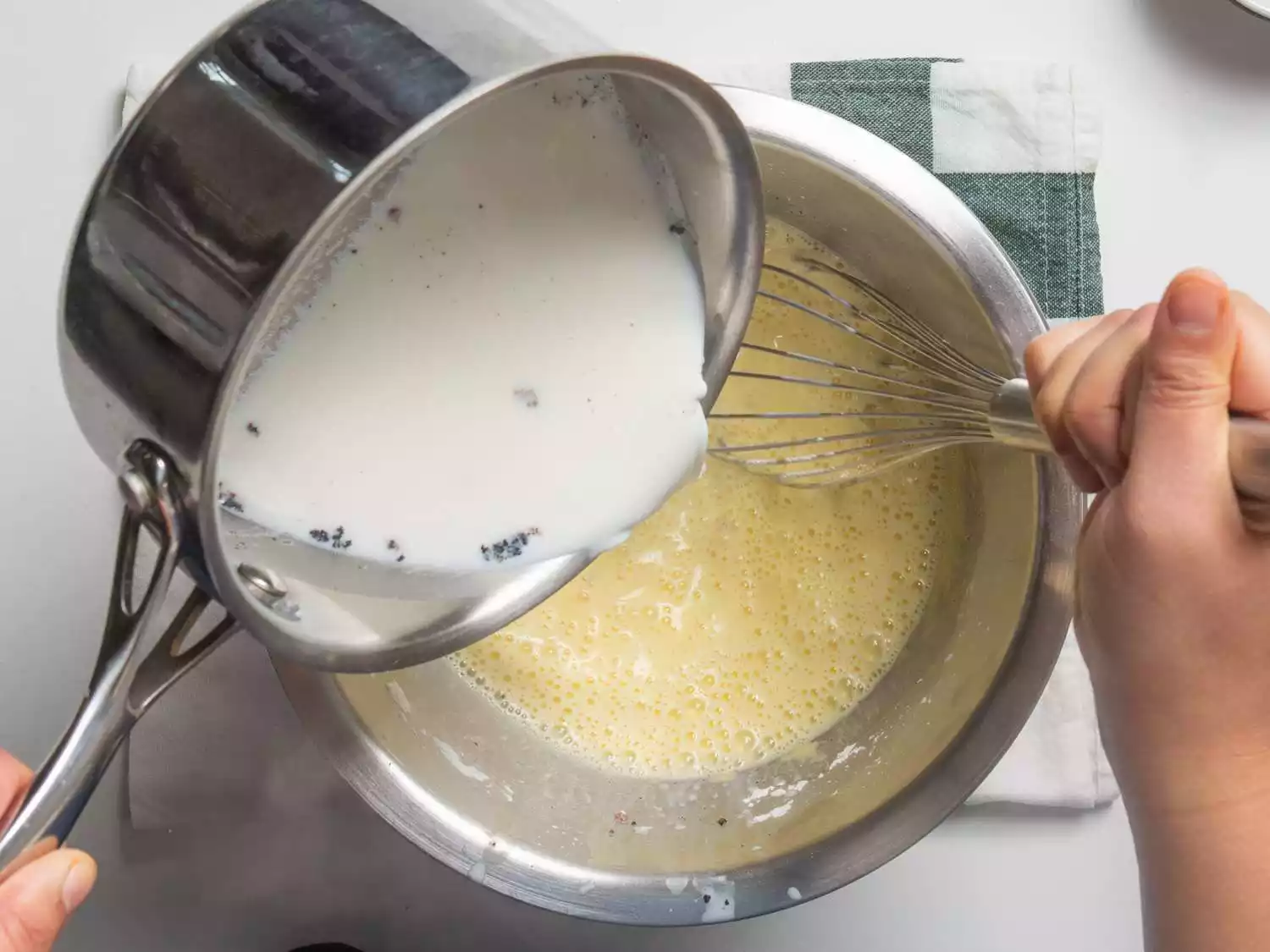
Creme Patissiere, the luscious pastry cream, finds its way into a multitude of culinary creations, adding richness and flavor to various desserts and pastries. Here’s a glimpse of its delightful culinary uses:
- Éclairs: A classic choice for filling éclairs, Creme Patissiere brings a creamy contrast to the crispy choux pastry shell.
- Cream Puffs (Profiteroles): Filling cream puffs with Creme Patissiere turns these delicate pastries into delightful morsels of creamy goodness.
- Fruit Tarts: It serves as a delectable base layer for fruit tarts, complementing the sweet and tart flavors of fresh fruits.
- Mille-Feuille (Napoleon): Layers of flaky pastry and Creme Patissiere create the iconic dessert known for its irresistible textures.
- Danishes: This creamy custard is a popular choice for sweet Danish pastries, infusing them with a rich, indulgent center.
- Cream Cakes: Spread between cake layers, Creme Patissiere adds a luxurious dimension to cream cakes, enhancing both flavor and texture.
- Tarts and Pies: Use it as a filling for various tarts, pies, and quiches to create creamy and flavorful centerpieces.
- Doughnuts: Filling doughnuts with Creme Patissiere transforms these sweet treats into a creamy delight.
- Trifles: Layer it with sponge cake, fruit, and whipped cream to craft elegant trifle desserts.
- Croissants: As a filling for croissants, it elevates the flaky pastry to a level of decadence.
- Soufflés: Incorporate it into soufflé recipes for a rich, creamy base that contrasts beautifully with the airy rise of the soufflé.
- Pancake Filling: Spread it between pancakes for a luxurious pancake stack, often served with fresh berries or a drizzle of syrup.
- Parfaits: Layer it in dessert parfaits, alternating with crumbled cookies, granola, or fresh fruits for delightful dessert cups.
- Profiterole Towers: Stack cream puffs filled with Creme Patissiere to create impressive and delectable profiterole towers.
- Cannoli Filling: For a unique twist on traditional cannoli, use Creme Patissiere as the filling, infusing them with creamy richness.
- Flavor Infusions: Experiment with flavor variations by adding extracts, zests, or chocolate for unique and customized pastry fillings.
Creme Patissiere creamy decadence and versatility make it a beloved component in pastry kitchens worldwide. Whether it’s filling pastries, tarts, or cakes, or serving as a layer in trifles and parfaits, this pastry cream elevates desserts to a level of indulgence that’s truly unforgettable.
Comparison table of Creme Anglaise and Creme Patissiere
Here’s a comparison table highlighting the key differences between Creme Anglaise and Creme Patissiere:
| Aspect | Creme Anglaise | Creme Patissiere |
|---|---|---|
| Texture | Silky and pourable | Thick and creamy |
| Primary Use | Dessert drizzle, accompaniment | Filling for pastries, tarts |
| Flavor Profile | Delicately sweet, often with vanilla | Richly sweet, ideal for pastries |
| Culinary Uses | Drizzling sauce, dessert base, accompaniment | Pastry filling, cream puffs, éclairs |
| Consistency | Delicate, requires careful preparation | More stable due to cornstarch |
| Serving Temperature | Often served warm or at room temperature | Variable, based on pastry type |
| Versatility | Adaptable, can be customized with various flavors | Often used with vanilla, but adaptable |
| Popular Desserts | Crème brûlée, bread pudding, fruit tarts | Éclairs, cream puffs, fruit-filled tarts |
This table outlines the key distinctions between these two delicious custards, highlighting their unique qualities and culinary applications.
Is there any similarities between Creme Anglaise and Creme Patissiere?
Here are the similarities between Creme Anglaise and Creme Patissiere:
- Base Ingredients: Both custards share common foundational ingredients, including eggs, milk, and sugar.
- Egg Yolks: Both recipes require the use of egg yolks, contributing richness and texture to the custards.
- Flavor Infusion: Vanilla is a common flavoring for both custards, and they can be customized with other flavorings such as extracts or zests.
- Cooking Technique: Gentle heating and constant stirring are crucial to both custards’ preparation to prevent curdling and achieve a smooth texture.
- Straining: After cooking, both custards are typically strained through a sieve to remove any cooked bits or lumps.
- Versatility: Despite their different uses, both custards demonstrate the versatility of egg-based desserts in culinary creations.
These similarities highlight the shared foundation of these custards while showcasing their distinct roles in enhancing various sweet dishes.
Tips for Making Perfect Creme Anglaise and Creme Patissiere
Tips for Making Perfect Creme Anglaise:
- Use fresh and high-quality ingredients, especially fresh eggs and good-quality vanilla extract or vanilla beans.
- When tempering, add the hot milk to the egg mixture slowly and whisk continuously to prevent curdling.
- Cook over low heat and stir constantly. Avoid high heat to prevent overcooking or curdling.
- Strain the custard through a fine-mesh sieve to remove any cooked bits or egg solids.
- Cool the Creme Anglaise quickly after cooking by placing the saucepan in an ice bath.
- Store it in the refrigerator with plastic wrap pressed directly onto the surface to prevent a skin from forming.
- Reheat gently and whisk before serving to regain a smooth consistency.
- Experiment with flavor variations like chocolate, coffee, or citrus for unique twists.
Tips for Making Perfect Creme Patissiere:
- Utilize whole milk for an unbelievably creamy and luxurious texture.
- Whisk egg yolks and sugar until pale and thick during the blanching process.
- Gradually add cornstarch to the egg mixture while whisking to avoid lumps.
- Cook over low to medium heat, stirring constantly to prevent scorching and ensure even thickening.
- Test for doneness by checking if it coats the back of a spoon and you can draw a line through it.
- Strain the custard through a fine-mesh sieve to remove any lumps or remnants of flavoring agents (e.g., vanilla bean).
- Cool it to room temperature, during which it will continue to thicken.
- Store in the refrigerator with plastic wrap pressed directly onto the surface to prevent a skin from forming.
- Before using, gently whisk the Creme Patissiere to regain its smooth consistency.
- Experiment with flavorings like almond, citrus zest, or different extracts for creative variations.
Conclusion
Creme Anglaise and Creme Patissiere reign supreme as essential components of numerous dessert creations. Their silky textures, delicate flavors, and versatility make them indispensable in the hands of skilled pastry chefs and home bakers alike.

